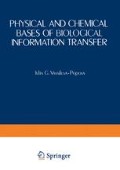Abstract
The divalent cation Ca+2 plays a central role in many physiological processes through its control of many properties and functions of cell membranes (1, 2). Morita and Chang (3) have reported that Ca+2 was required to maintain the motility of hamster spermatozoa incubated at 37°C, but that the motility of guinea pig, rat and rabbit spermatozoa was maintained in the absence of this ion. Effects of Ca+2 on rabbit spermatozoa might be expected, since rabbit oviduct fluid contains about 2 mM Ca+2, as originally shown by Holmdahl and Mastroianni (4). Increased respiration by rabbit spermatozoa in rabbit oviduct fluid has been demonstrated (5, 6), but this has been attributed to HCO3 in the fluid. The effect of Ca+2 in this regard has never been assessed. We have shown in this laboratory (7, 8) a direct effect of Ca+2 on the mitochondria in hypotonically treated rabbit sperm cells in which mitochondria are intact and accessible to added reagents: respiration is increased as Ca+2 is taken up in an energy-linked process which competes rather poorly for the high energy intermediates of oxidative phosphorylation. The physiological significance of this mitochondrial Ca+2 uptake is as obscure for the sperm cell as it is for other mammalian cells in which the uptake is far more efficient (9–11).
Access this chapter
Tax calculation will be finalised at checkout
Purchases are for personal use only
Preview
Unable to display preview. Download preview PDF.
References
Bianchi, C.P. (1968). “Cell Calcium,” Butterworths, London.
Manery, J.B. (1969). In: Mineral Metabolism (C.L. Cornar and F. Bronner.), Vol. 3, pp. 405 - 452, Academic Press, New York.
Morita, Z. and Chang, M.C. (1970). Biol. Reprod. 3, 169–179.
Holmdahl, T.H. and Mastroianni, L., Jr. (1965). Fertil. Steril. 16, 587–595.
Folly, C.W. and Williams, W.L. Proc. Soc. Exp. Biol. Med. 126, 634–637.
Brackett, B.G. (1968). Sixth Cong. Intern. Reprod. Anim. Insem. Artif., Paris JL, 43–46.
Storey, B.T. and Keyhani, E. (1973). FEBS Letters 37, 33–36.
Storey, B.T. and Keyhani, E. (1974). Fertil. Steril. 25, 976–984.
Chance, B. (1965). J. Biol. Chem. 240, 2729–2748.
Lehninger, A.L., Carafoli, E., and Rossi, C.S. (1967), Advan. Enzymol. 29, 259–320.
Lehninger, A.L. (1970). Biochem. J. 119, 129–138.
Morton, B., Harrigan-Lum, J., Albagli, L., and Jooss, T. (1974). Biochem. Biophys. Res. Comm. 56, 372–379.
Garbers, D.L., First, N.L., Sullivan, J.J., and Lardy, H.A. (1971). Biol. Reprod. 5., 336–339.
Hoskins, D.D. (1973). J. Biol. Chem. 248, 1135–1140.
Tash, J.S. and Mann, T. (1973). Proc. Roy. Soc. London B 184, 109–114.
Garbers, D.L., First, N.L., and Lardy, H.A. (1973). Biol. Reprod. 8, 589–598.
Morton, B.E. and Chang, T.S.K. (1973). J. Reprod. Fert. 35, 255–263.
Shoenfeld, C., Amelar, R.D., and Dubin, L. (1973). Fertil. Steril. 24, 772–775.
Keyhani, E. and Storey, B.T. (1973). Biochim. Biophys. Acta 305, 557–569.
Scarpa, A. (1972). Methods Enzymol. 24, 343–351,
Chance, B. (1972). Methods Enzymol, 24, 322–335.
Chance, B. and Williams, G.R. (1956). Advan. Enzymol. 17, 65–134.
Reed, P.W. and Lardy, H.A. (1972). J. Biol. Chem. 247, 6970–6977.
Tibbs, J. (1962). In: Spermatozoan Motility11 (D.W. Bishop, ed.), pp. 233–250, Publication No. 72, Amer. Assoc. Advance. Sei., Washington, D.C.
Vinogradov, A., Scarpa, A., and Chance, B. (1972). Arch. Biochem. Biophys. 152, 646–652.
Chasin, M., Harris, D.N., Phillips, M.B., and Hess, S.M. (1972). Biochem. Pharmacol. 21, 2443–2450.
Hoskins, D.D., Stephens, D.T., and Hall, M.L. (1974). J. Reprod. Fert. 37, 131–133.
Author information
Authors and Affiliations
Editor information
Editors and Affiliations
Rights and permissions
Copyright information
© 1975 Plenum Press, New York
About this chapter
Cite this chapter
Storey, B.T. (1975). Calcium and Cyclic AMP Effects on Rabbit Epididymal Spermatozoa. In: Vassileva-Popova, J.G. (eds) Physical and Chemical Bases of Biological Information Transfer. Springer, Boston, MA. https://doi.org/10.1007/978-1-4684-2181-1_27
Download citation
DOI: https://doi.org/10.1007/978-1-4684-2181-1_27
Publisher Name: Springer, Boston, MA
Print ISBN: 978-1-4684-2183-5
Online ISBN: 978-1-4684-2181-1
eBook Packages: Springer Book Archive

